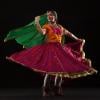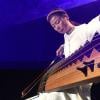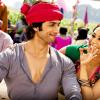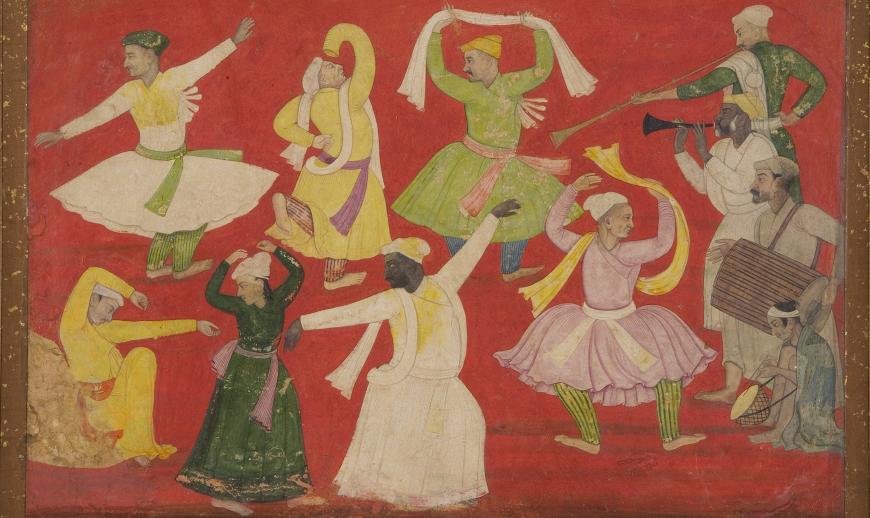
Although Forrest McGill, senior curator of South and Southeast Asian Art at San Francisco’s Asian Art Museum, looks forward to the upcoming exhibition Beyond Bollywood, right now he’s a little harried, trying to talk on the phone in the midst of all the hammering and drilling involved with installation and getting pulled in various directions to answer questions like if a piece should hang five inches higher or five inches lower.
You can’t blame him for feeling a little tense. McGill and his colleagues (he co-curated the show with Ainsley M. Cameron at the Cincinnati Art Museum) have been working on Beyond Bollywood, which opens March 31 and runs through July 10, for five years. This has meant negotiating the loans of the exhibition’s 120 or so artworks from about two dozen collections and museums, including New York’s Metropolitan Museum of Art, the Los Angeles County Museum of Art, and the Cleveland Museum of Art. In addition to all the sculptures, paintings, and textiles, they’ve also been lining up performers and immersive galleries with video and sound.
We think of dance as spiritual, social, and celebratory, but McGill hopes this exhibition will lead visitors to realize that dance has the power to communicate all kinds of emotions.
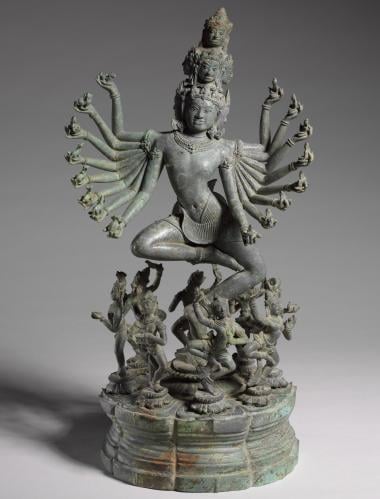
“One of the things I think will be surprising — and I hope a kind of revelation for our visitors — is, in the Indian, Southeast Asian, and Himalayan context, how dancing is associated with combat and violence as well as happy things,” he said. “Quite often, very ferocious deities dance.”
On the day we talked, a statue of one of those ferocious deities, Chamunda, on permanent display at the Harvard Art Museums (but lent out for this show), had been installed in the galleries.
“This deity — she’s skeletal, she’s standing on a body, she’s holding a lopped-off human head. She’s wearing a long garland of human heads and bones, and she’s holding all kinds of weapons,” McGill said. “These so-called mother goddesses have this very kind of intense, complicated symbolism where sometimes they’re protective and nurturing and sometimes they’re violent and destructive.”
McGill decided to arrange the exhibition in five thematic sections showing the range of things dance can do: “Destruction and Creation,” “Devotion,” “Subjugation,” “Glorification,” and “Celebration.”
Indra Mungal, the Asian Art Museum’s senior educator for public programs, finds these themes useful.
“The way Forrest has organized these are helpful to me as a viewer when I walk through the gallery,” she said. “I grew up with Ganeshas and Shivas and all, and I love them, and I’ve heard the stories, but I haven’t thought about, ‘Oh, this is a devotional dance.’ So, the way it’s organized is super cool — and Forrest always does that.”
The museum will also have a plethora of programs around the exhibit, including “Dance Dialogues,” taking place in the exhibition galleries with a museum educator and a dancer. These will include short performances and the dancers choosing an artwork and talking with visitors about how it relates to their practice. Some of the dancers scheduled include Antoine Hunter with the contemporary Urban Jazz Dance Company and Cambodian dancer Charya Burt.
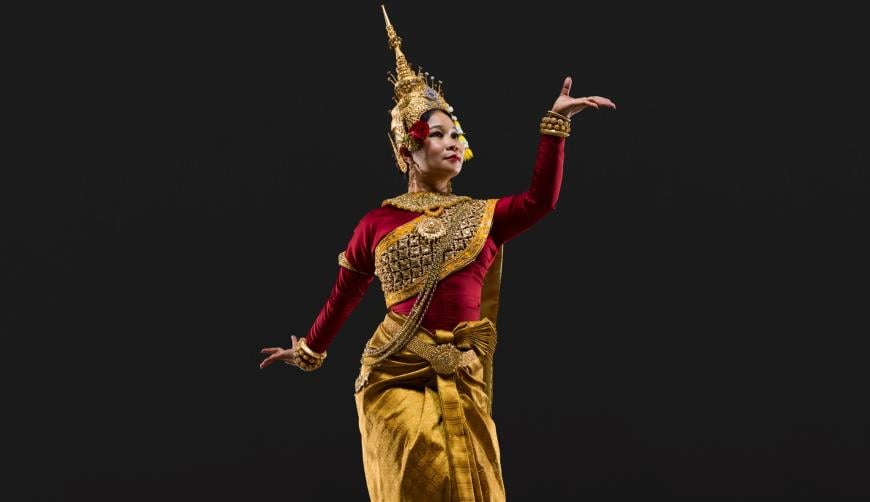
Along with those dialogues, local and international dance groups will perform in the museum’s Samsung Hall, which Mungal thinks will engage viewers.
“We’re starting to have more experience-centered exhibitions,” she said. “We want to have more things in the galleries, where you’re not just looking at works on the wall but you’re interacting in some way and having them come to life.”
Mungal arranged for a Tibetan group, El Cerrito’s Chaksam-pa, to come to the museum on May 20. She says the troupe has been concentrating on Tibetan opera in recent years, but at the museum, members will perform rarely seen pieces, including the Tibetan skeleton dance and a purification dance. Also on that day, Fremont’s Aerodance will present dances praising Hindu gods and goddesses.
The other performance will be June 15 as part of the city’s Pride celebrations and feature Amit Patel, who lives in Fremont, where he grew up, and Prumsodun Ok, who started Cambodia’s first LGBTQ dance group.
On a video call from Cambodia, Ok said that he’d loved dance since he was a little boy and that there are videos of him wearing his sister’s red dress and dancing at 3 years old. He grew up in Long Beach, where his family moved after fleeing Cambodia’s Khmer Rouge regime.
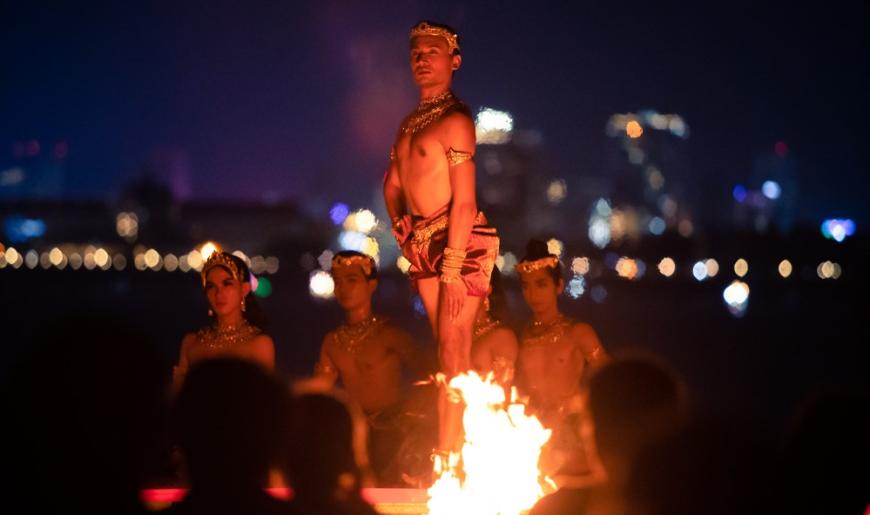
Ok looks forward to coming to San Francisco (where he lived when he studied experimental filmmaking at the San Francisco Art Institute) to perform two sacred solos — one about a woman making a pilgrimage to pray for her troubled land and becoming possessed by deities and the second depicting someone who is half male and half female and acts as a messenger between the people and the gods.
“These two dances, for me, really represent the ways that our traditions, our culture, and our histories are bigger than Eurocentric notions of ‘queer,’” Ok said. “In one case, you have a tradition in which dancers become possessed by spirits. Those spirits can be male or female or animal or divine, and therefore in that act of possession, we show that the body, the form, is just an illusion. And in the second dance, we show this being who’s half male and half female, who represents creative power, and to see such a figure elevated to be the one that’s chosen to be the bridge between heaven and earth — I think that’s important.”
Unlike Ok, Patel didn’t start dancing until he was 10. He didn’t love it — his mother had signed him up for Bollywood classes hoping her shy son would come out of his shell. It wasn’t until he was older that he enjoyed it.
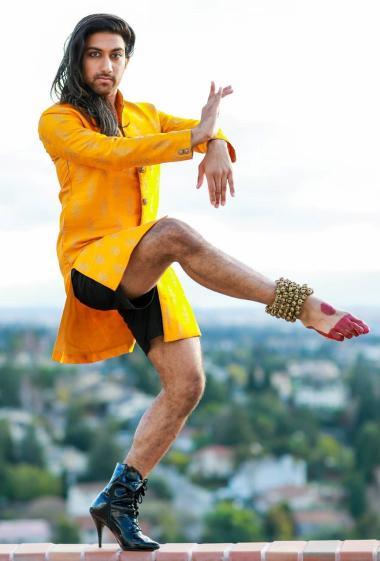
“When I started doing a lot more contemporary dance mixed with storytelling, I felt I was finally able to represent myself and feel like, ‘Oh, I’m telling a story about me or something I want to convey,’” Patel said. “I think that’s kind of when that light switch finally turned on, like, ‘Oh, wow, I can use this as a way of telling stories, whether it’s about queerness or mental health or different social issues,’ and I thought that was really fascinating.”
Patel started teaching his class “Bollywood Heels” after he took a workshop like it in 2016 right out of college and loved it. He wanted something where others could feel like that, too.
“I took this one class, and I just felt a surge of confidence and empowerment. I was like, ‘What is this feeling?’ You know, I felt a few inches taller,” he said. “I’m walking with so much more confidence. And even after I took off the heels, I was like, ‘Wait, that confidence has stayed with me.’”
Patel says he’s never seen an exhibit like Beyond Bollywood with so much context and depth.
“I’m just really excited to see all these different histories of South Asia seen through art,” he said. “And in the pieces my company’s going to be doing, we’re touching upon gender fluidity and expression within South Asian history and dance forms. Those identities have existed in India’s past, and being able to express them in new ways is really exciting.”
For McGill, the immersive nature of the exhibition is thrilling. He has planned individual rooms before the five sections, each of which will have just one artwork along with special lighting, sound effects, and in some cases video, to set an emotional tone for the galleries.
For example, before “Destruction and Creation,” there will be a statue of Shiva dancing while NASA footage of solar flares plays on the three walls surrounding it, with the sound of the hand drum Shiva plays added in.
“We wanted to make sure that our visitors are encouraged to engage their emotions as well as their intellects,” McGill said. “A lot of these artworks are really about emotional states, and obviously, dance is extremely communicative of emotion.”


